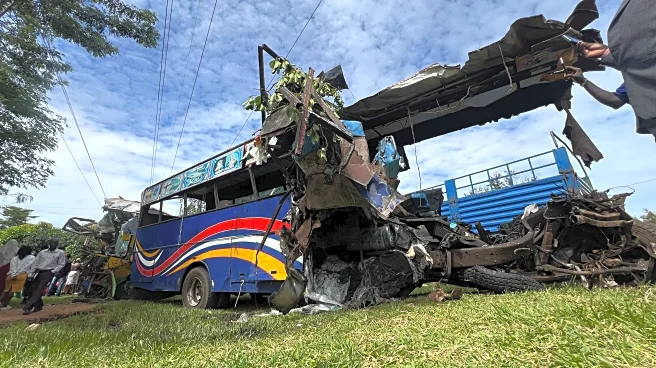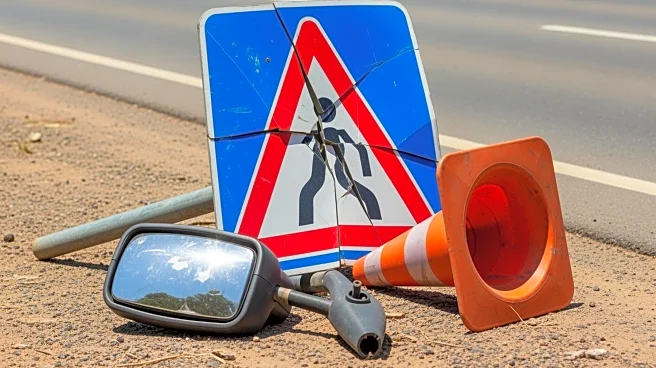What's Happening?
A tragic accident involving two buses and two other vehicles occurred on a highway in western Uganda, resulting in the deaths of at least 46 people. Initially, the death toll was reported as 63, but authorities
later revised it, noting that some victims initially counted as deceased were found unconscious but alive. The crash took place near the town of Kiryandongo when two buses attempted to overtake other vehicles, leading to a head-on collision. Fatal road crashes are common in Uganda, often attributed to speeding and narrow roads. The Red Cross described the incident as one of the worst motor accidents in recent years, with victims suffering severe injuries.
Why It's Important?
The high death toll from this accident highlights ongoing road safety issues in Uganda and East Africa, where infrastructure and enforcement of traffic laws are often inadequate. The incident underscores the need for improved road safety measures and stricter enforcement of traffic regulations to prevent such tragedies. The rising number of road fatalities in Uganda, which increased from 4,534 in 2022 to 5,144 in 2024, indicates a growing public safety concern. This accident serves as a reminder of the urgent need for government action to address road safety and reduce the frequency of such deadly crashes.
What's Next?
As investigations continue, Ugandan authorities are urging motorists to exercise caution and avoid dangerous overtaking maneuvers, which are a leading cause of crashes. Road safety campaigners, like Joseph Beyanga, are advocating for better enforcement of traffic rules and organizing awareness events to highlight the issue. Beyanga plans a memorial walk in November to honor those killed or injured in road crashes, aiming to raise public awareness and push for government action to improve road safety.
Beyond the Headlines
The crash reveals deeper issues related to road safety in Uganda, including the lack of enforcement of traffic laws and inadequate infrastructure. The incident may prompt discussions on the ethical responsibility of government and civil society to ensure safer roads. Long-term solutions could involve investment in road infrastructure, public education campaigns, and stricter enforcement of traffic regulations to prevent future accidents.












